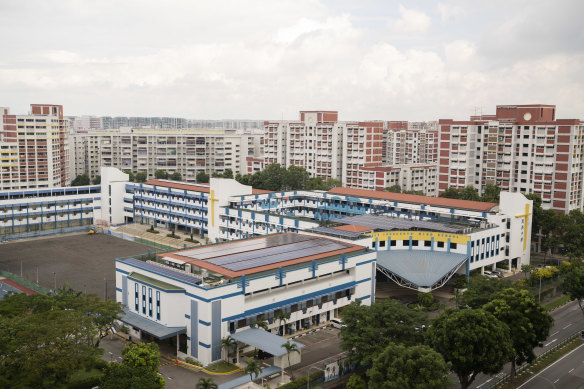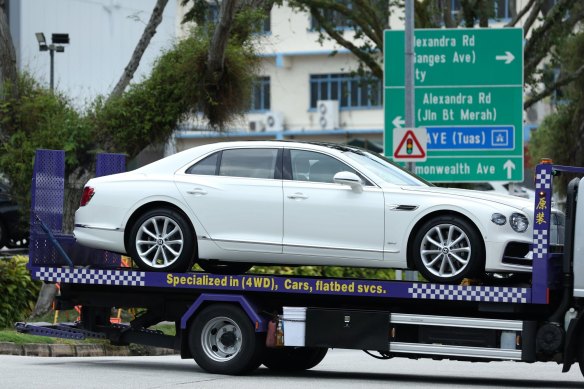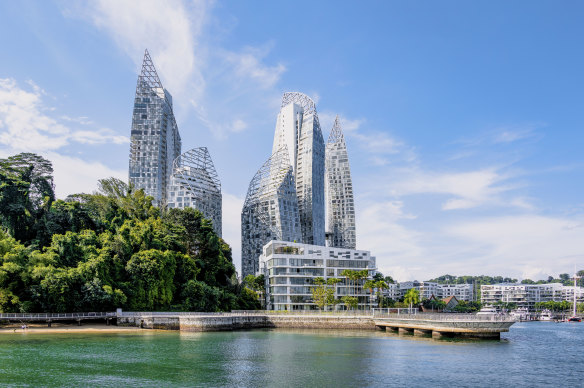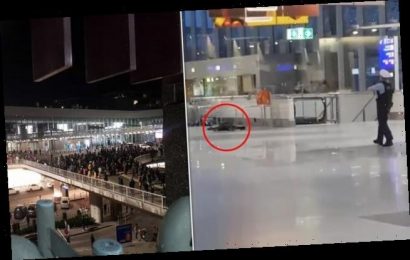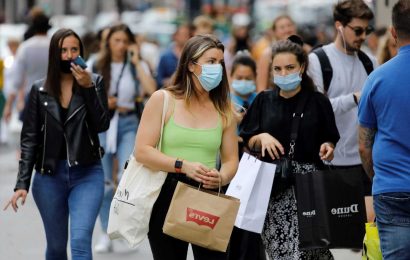What in the World, a free weekly newsletter from our foreign correspondents, is sent every Thursday. Below is an excerpt. Sign up to get the whole newsletter delivered to your inbox.
Most weekends my wife and our sons will head off for a ride on the “park connectors” that link Singapore’s major green spaces and are dedicated to foot and bicycle traffic.
Typically, the family will stop off at one of the myriad playgrounds that adjoin Singapore’s ubiquitous Housing and Development Board (HDB) blocks of flats. The swings and climbing equipment hold great appeal for our boys, who are eight and six and yet to properly consider the broader benefits of affordable housing.
Housing and Development Board flats in Singapore’s Hougang area.Credit:Ore Huiying
Singapore, however, takes great pride in its half-century-old public housing program for reasons well beyond the range of facilities for children. Government-built and subsidised for Singaporeans, they are seen by decision makers in the financial hub as a way for the nation-state to look after its own.
Examples of extreme wealth, however, are also easy to find, from the Bentleys and Ferraris in particularly well-heeled parts of town such as Tanglin and Bukit Timah to eye-watering property prices. Last year, a “super penthouse” overlooking Marina Bay went on the market for $80 million and bungalows – the most prized real estate for the mega rich – have fetched north of $100 million.
Foreign money is pouring in and rents soared by as much as 50 per cent last year for condominiums, where most of Singapore’s 1.3 million foreigners reside. It was little surprise in December to see Singapore tie with New York for the title of the world’s most expensive city.
Sales of luxury cars are humming in Singapore with about 87 Bentleys registered in 2022, up 26 per cent on 2019. Credit:Lionel Ng
In the face of such visible prosperity, the HDBs are intended to provide an economical market entry point and housing security for lower and middle income earners.
The government has in the past six decades built more than a million of the flats, selling them on 99-year leases that owners can trade on the open market. They continue to be built and offered new for order as well – this year, for instance, there are plans to roll out another 23,000.
The HDBs don’t have all the bells and whistles of Singapore’s condo complexes, which usually boast tennis courts, gyms, swimming pools and underground car parks, but they’re often more spacious and come with game-changing advantages.
For starters, the prices. They’ve been rising over the past two years but on average a four-bedroom flat goes for just over $500,000 when an owner puts it up for sale and “you can expect a condo build of similar size to be at least two to three times that amount,” Claire Yeo, the brand and marketing for property portal 99.co, told me.
Luxury apartments in the Keppel Bay area.Credit:Getty
Singaporeans can also draw from their compulsory savings to pay their deposit and to cover their mortgage repayments, and can receive a government grant to aid their purchase if they fall under the income thresholds of $14,000 a month for families and $7000 a month for singles.
There are guardrails. For example, buyers can’t purchase an HDB if they already own another property and HDB owners have to hold on to their flat for at least five years before they can offload it or rent it out in full. In family-centric Singapore, you also have to be a married couple or a family nucleus to buy an HDB unless you are 35, by which age you can acquire one on your own.
There are parameters around the ethnic make-up of each HDB neighbourhood to promote social cohesion between the island’s three main ethnic groups: Chinese (74 per cent), Malays (14 per cent) and Indians (9 per cent). The blocks’ distinctive open-air ground levels are also designed to advance community engagement and play host to cultural events, weddings and funerals.
As successful as Singapore has been, however, not even it has been immune to the crisis in housing affordability and availability gripping many parts of the world.
Flats on the open market increased in price by 10 per cent last year and 12 per cent the year before in a shift that has been fuelled by disruption to supply during the pandemic, according to Nicholas Mak, the head of research and consultancy at Singapore’s ERA Realty.
Amid the rise, 370 HDB units each sold last year for more than $1 million. Housing, as a result, has been a big topic of debate lately in parliament, where opposition MPs spoke this week of the growing anxiety about it.
In response, National Development Minister Desmond Lee admitted the HDB scheme was “far from perfect” and insisted the government was working to improve access to property.
At the same time, though, he offered a reminder of how Singaporeans fare in the global arena, citing the likes of Sydney, London, Los Angeles and Hong Kong and the price-to-income ratios that dwarf the numbers here.
“Ninety per cent home ownership in a cosmopolitan city is not something that many other major cities have been able to achieve,” he said.
As my boys can attest, the playgrounds aren’t bad either.
Get a note directly from our foreign correspondents on what’s making headlines around the world. Sign up for the weekly What in the World newsletter here.
Most Viewed in World
From our partners
Source: Read Full Article
